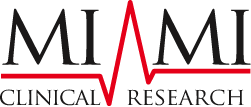There are four phases to clinical studies. Each phase dictates the research topics being asked. By understanding the steps taken to determine a drug’s efficacy, safety, and side effects, patients can make more informed decisions regarding their care.
Here’s a deeper look at each phase of Miami clinical trials:
Phase One
The purpose of phase 1 Miami clinical trials include confirming the therapy’s safety in people and figuring out how and where it spreads throughout the body. Normal testing involves a limited number of healthy volunteers. A potential “severe adverse event” is defined as any harmful, unfavorable, or unintended consequence that results in mortality or poses a threat to health, such as a birth defect, heart attack, or other major medical problem, and is kept an eye out for by the trial sponsor. Results from phase 1 are gathered, examined, and submitted to the FDA for approval to move on to phase 2 clinical trials.
Phase Two
A phase 2 Miami clinical trial’s objective is to determine the best dosage and level of efficacy for treating that specific ailment. Usually, a larger number of volunteers with the condition participate in this testing. There are many other ways that a trial sponsor might carry out their trial, but the typical approach entails splitting up the participants into several treatment groups so that they can individually receive the treatment in a variety of doses or ways. Typically, there is a “control group” that is given either the existing standard of care or a “placebo” medication, such as a sugar pill or harmless injection, which does not include the treatment. The health of the patient group(s) that got the various treatments are then compared to the control groups.
Phase Three
The primary objective of a phase 3 Miami clinical trial, which involves a substantially greater number of volunteers, is to ascertain whether the treatment would be safe and efficient for a broad range of patients. Assigning participants to treatment or control groups is a typical aspect of the plan. There may be more than one treatment group, particularly if the treatment entails a mix of medications or other elements. A control group is once more present, and it is given either the current standard of care regiment or a placebo. The health of the patients who received the various treatments is then compared to the control groups following the conclusion of phase 3 clinical trials.
Phase Four
Your product has FDA approval at this point in the Miami clinical trials, and your marketing initiatives are in motion. Clinical studies conducted in phase 4 concentrate on learning more about its long-term effects and its interactions with other medications.
At Miami Clinical Research, we are a group of healthcare professionals dedicated to improving the quality of health and wellness through medical research. If you’re ready to start looking for a Miami clinical trial, visit us online to explore studies and see if one fits your needs.


